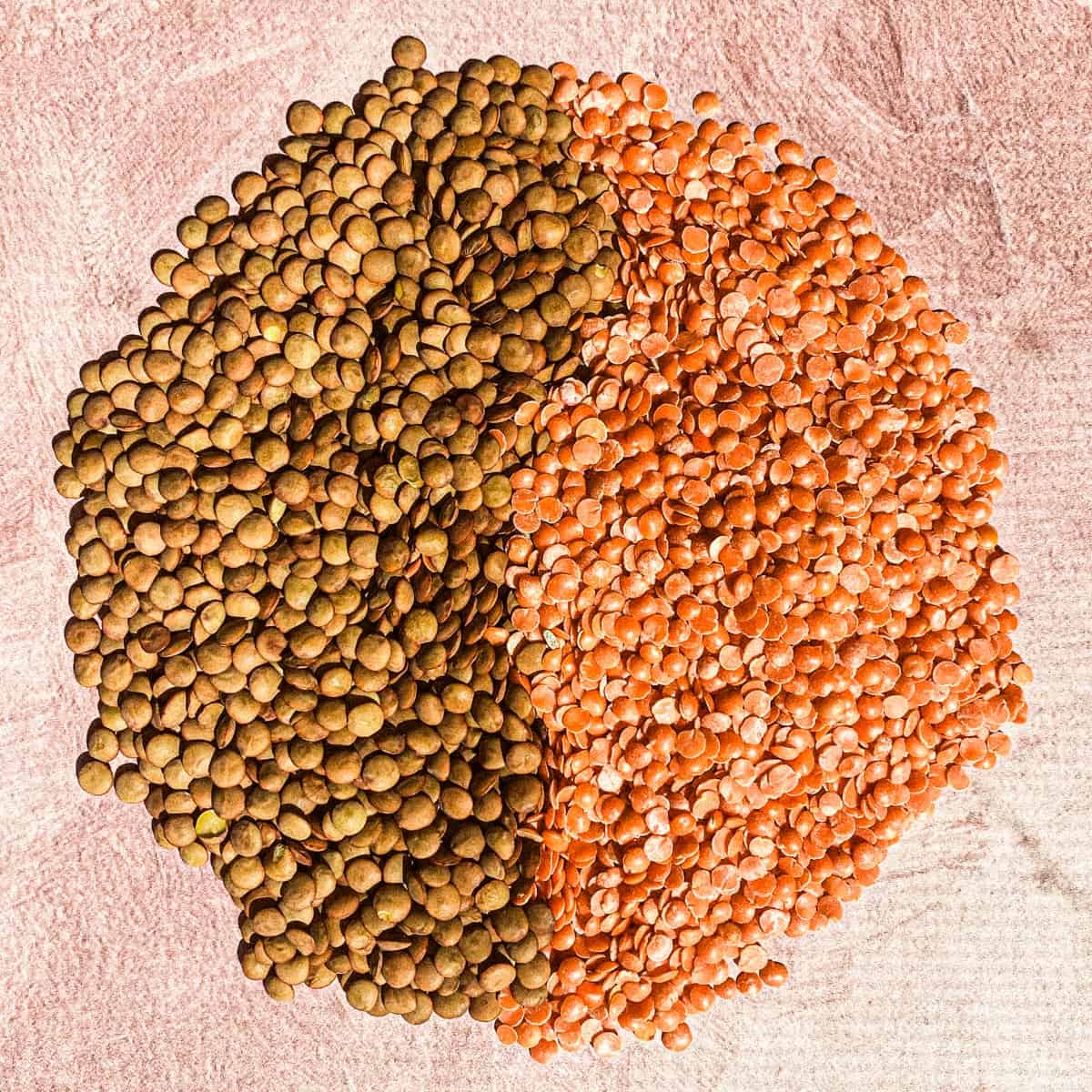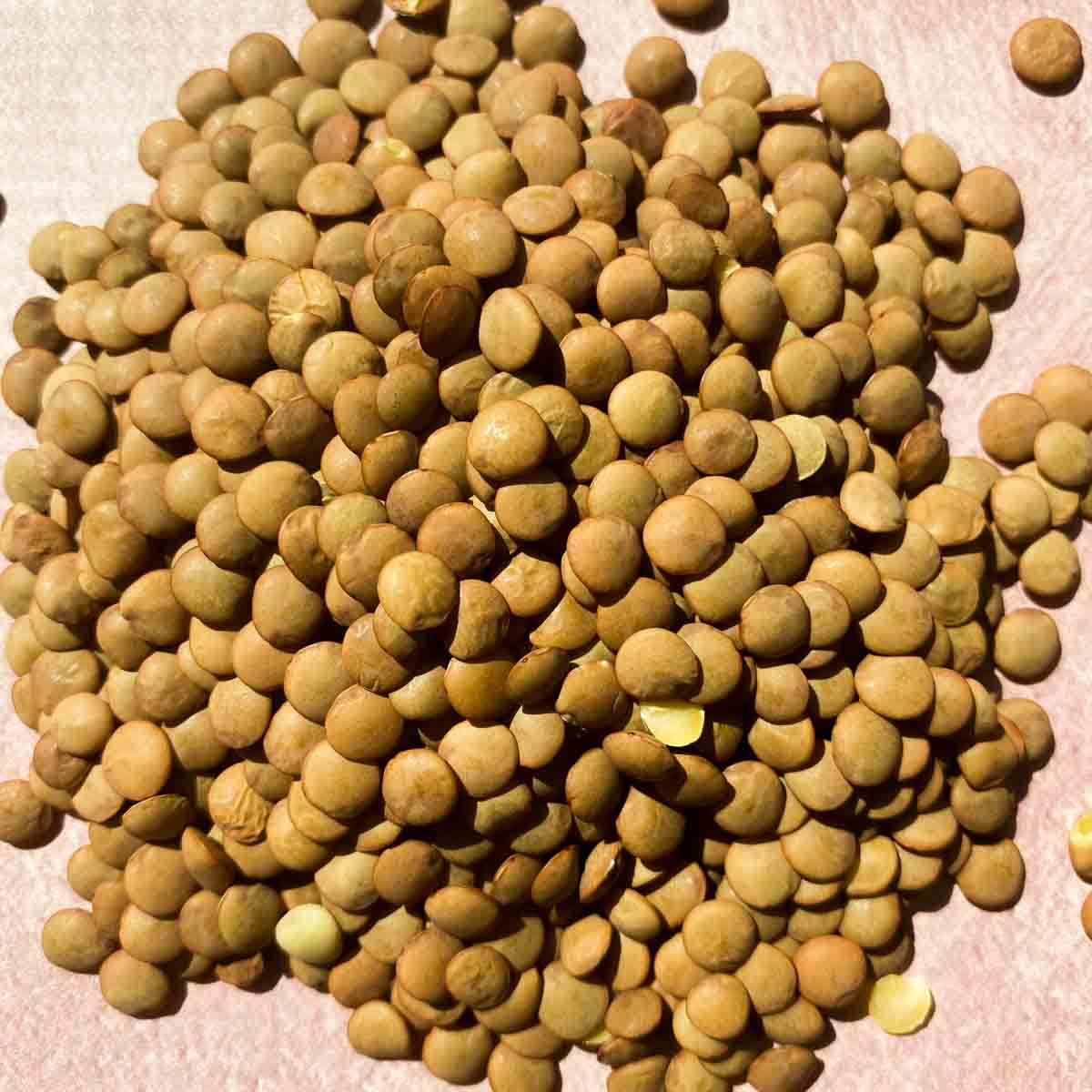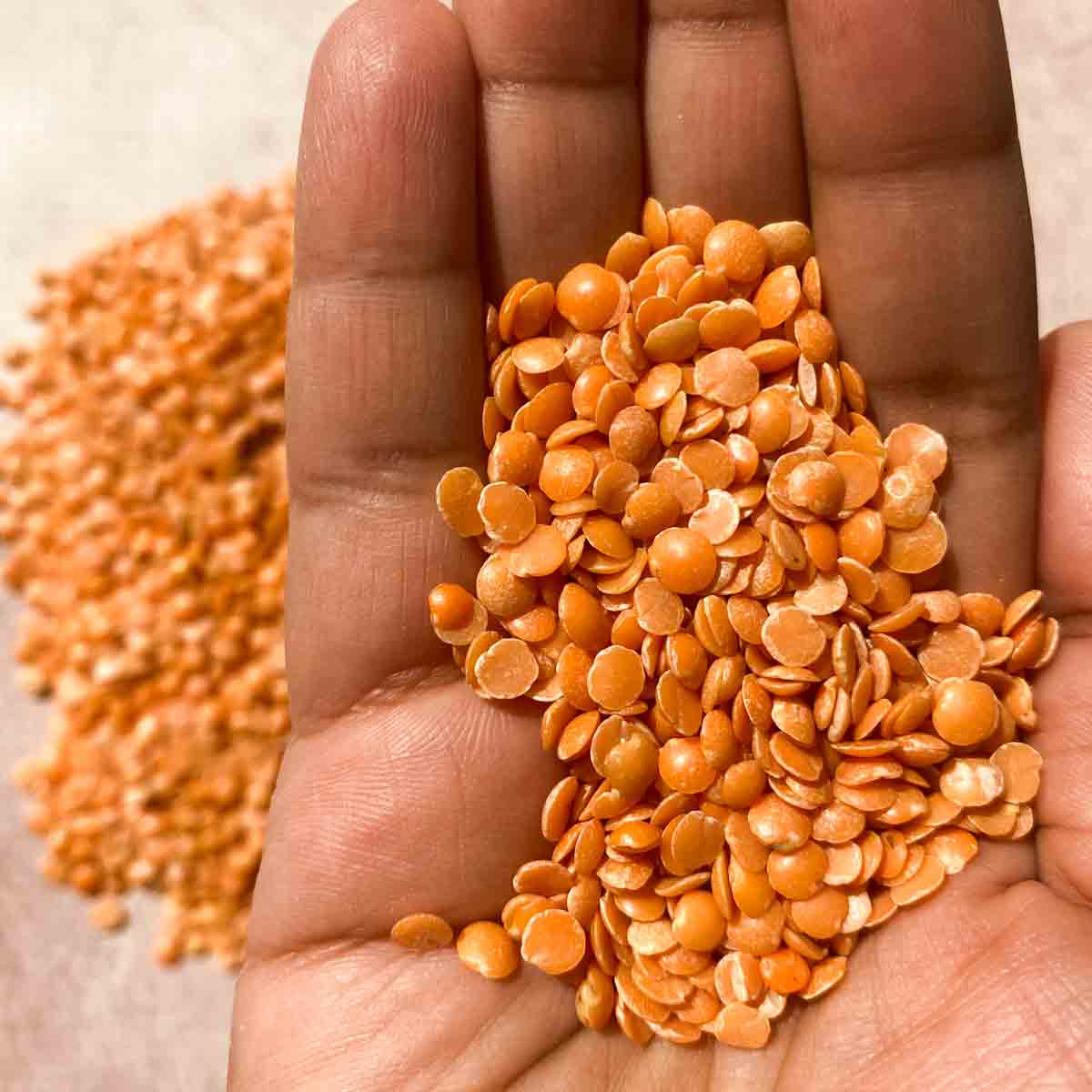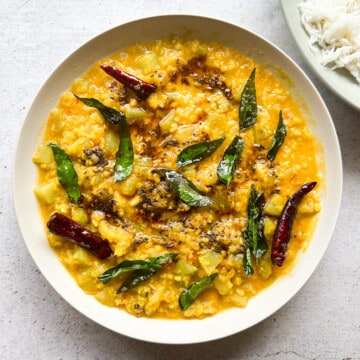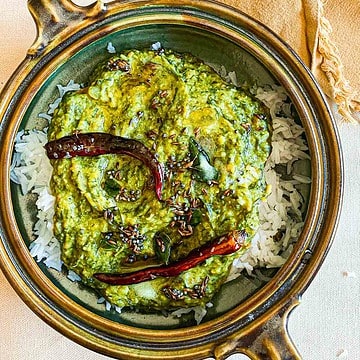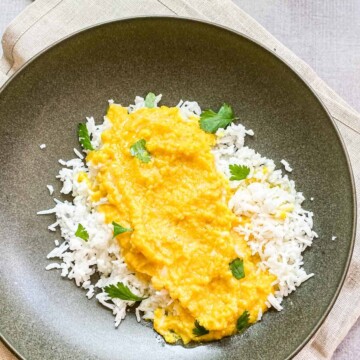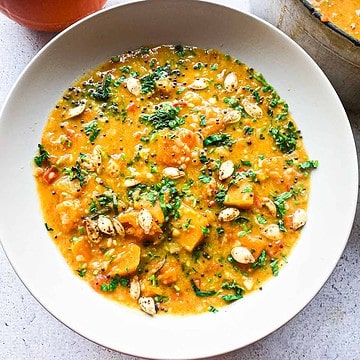Different variations of masoor dal
In general, most dals including masoor dal come in variations such as whole vs. split and hulled vs. not hulled (meaning skin on or removed). You can learn more about how this applies to other dals in the ultimate guide to Indian dals. However, for masoor dal, the main popular varieties are whole masoor (unhulled) and split masoor dal aka red lentils (hulled). Below, we will go over the different varieties in detail and explain how each one can be used in Indian cooking.
Whole masoor dal
Definition:
Whole masoor dal, also sold as “masoor whole”, is the whole version of the dal that is flat in shape with a green/brown hue and is unhulled (skin is not removed).
How it is used in Indian cooking:
Whole masoor dal is often used in dals or curries where the lentil adds texture to the dish. Since it is thick, it will retain its shape after cooking. It can also be cooked and added to lentil salads for texture. Compared to other whole dals like urad dal or moong dal, masoor dal is much flatter and thinner which means that it is one of the fastest cooking dals. Masoor dal is also commonly sprouted in Indian cooking by soaking and allowing the dal to form sprouts. The sprouts are then used in salads, subzis, and curries. Does it need to be soaked? Yes - just like beans, green whole moong cooks more evenly when it is soaked before cooked.
Substitutes:
Whole moong dal, whole urad dal, black eyed peas.
Split masoor dal aka red lentils
Definition:
Split masoor dal, also known as red lentils, is masoor dal that has been processed and cut into flat disks where the brown/green exterior has been removed to reveal the flat red interior.
How it is used in Indian cooking:
Split masoor dal is used to make creamy dals. Since the dal is split, the dal tends to lose its shape when cooked and melts into a creamy texture. Does it need to be soaked? Nope. It is not required; however, soaking never hurts when cooking dal. It helps cook the dish more evenly.
Substitutes:
The best substitute for this dal is split moong dal because it has a similar thickness, cook time, and taste. They are interchangeable 1:1 in recipes.
Where to buy it?
Recipes to try with masoor dal
Some of these recipes listed below reference moong dal; however, you can easily use masoor dal instead.
Masoor dal vs. other Indian dals
This article dives into masoor dal and its use cases in particular. However, urad dal, toor dal, and chana dal are other varieties that are very common in Indian cooking, each with their own uses cases. Masoor dal is most like moong dal in its properties. Learn more about how this dal compares to the other varieties in the ultimate guide to Indian dals, which also goes over their nutritional comparisons. This is a high level overview on masoor dal! Please leave a comment below letting me know what you thought of this article and if it was helpful to you! I always love hearing your questions and your comments 🙂
